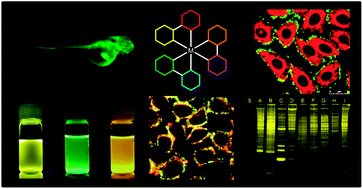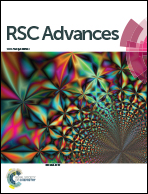Utilization of the photophysical and photochemical properties of phosphorescent transition metal complexes in the development of photofunctional cellular sensors, imaging reagents, and cytotoxic agents
Abstract
Although the interactions of phosphorescent transition metal complexes with biological molecules such as DNA and proteins have been extensively investigated, there is a rapidly emerging area of research that focuses specifically on the cellular uptake of phosphorescent transition metal complexes and their applications as cellular reagents such as biosensors for ions and small molecules, and bioimaging reagents for organelles and tissues. This interest stems from the rich phosphorescence properties, and in some cases the controllable photochemical reactivity of transition metal complexes, which complement fluorescent organic dyes and luminescent lanthanide chelates. In this review article, we briefly introduce the fundamental photophysical properties of phosphorescent transition metal complexes and explain the reasons why the complexes are attractive candidates as cellular reagents. Very recent applications of these complexes in biosensing and imaging in an intracellular environment using different strategies are also summarized. Additionally, phosphorescent transition metal complexes with potential therapeutic applications are highlighted in this article.

- This article is part of the themed collections: Luminescence and photophysical properties of metal complexes and Cellular and Tissue Imaging – Luminescent Tags and Probes

 Please wait while we load your content...
Please wait while we load your content...